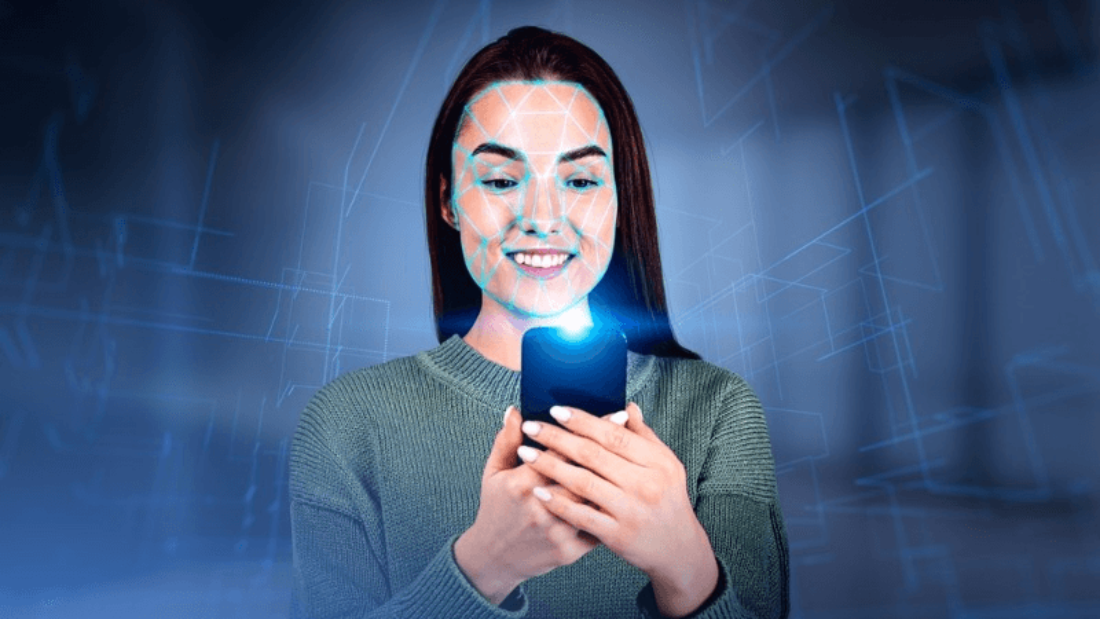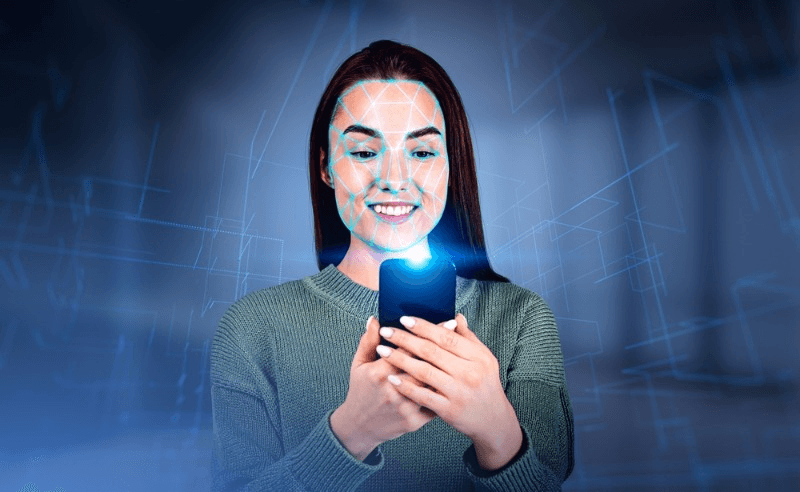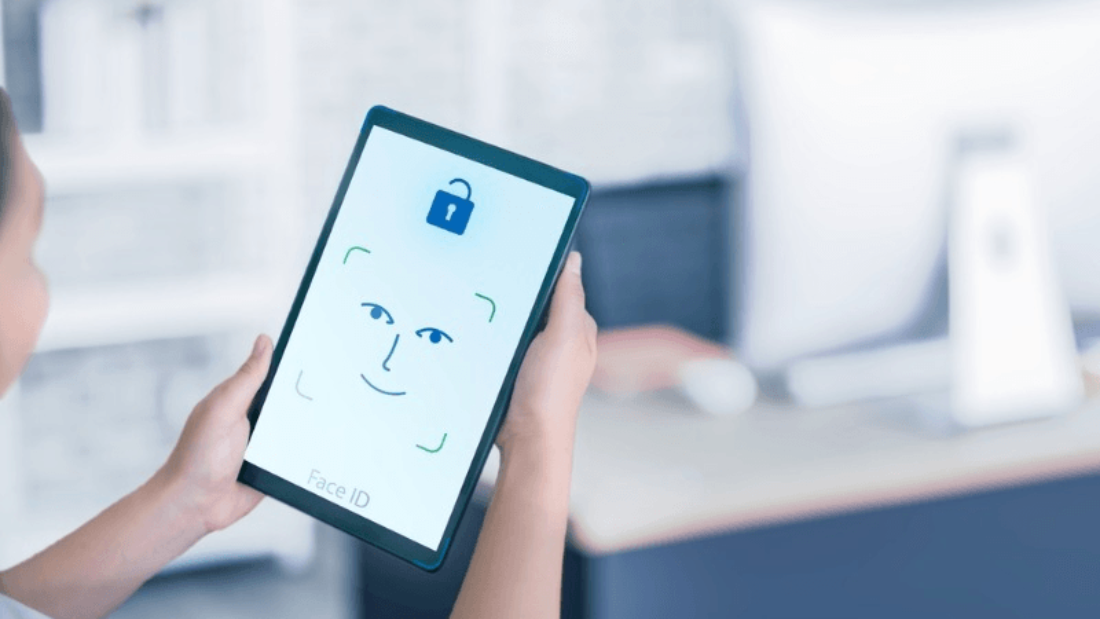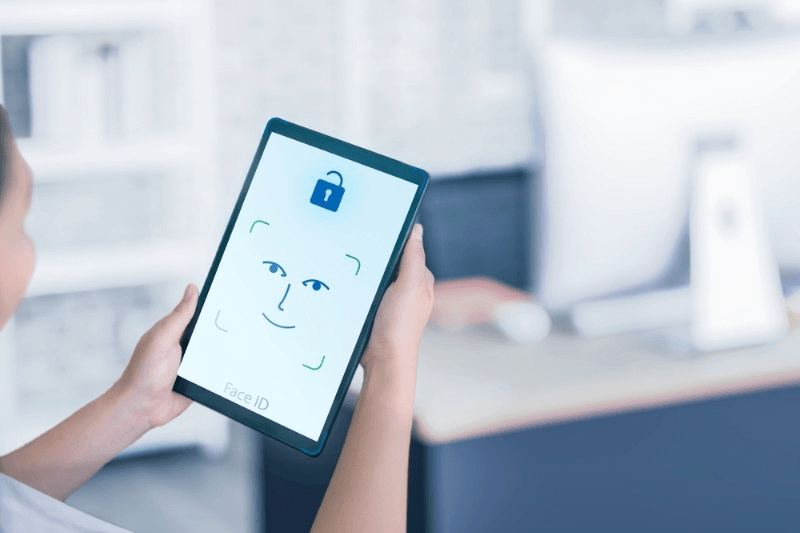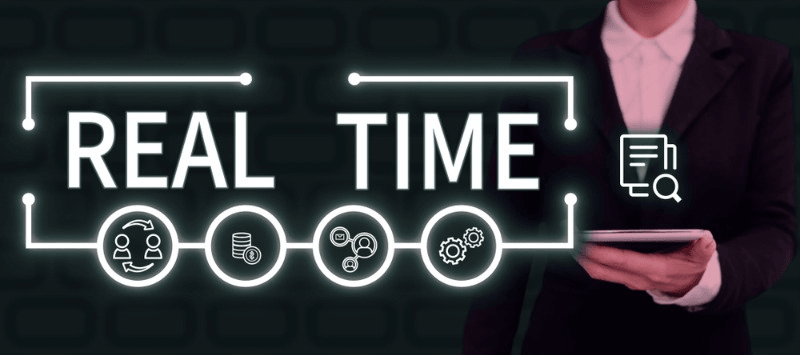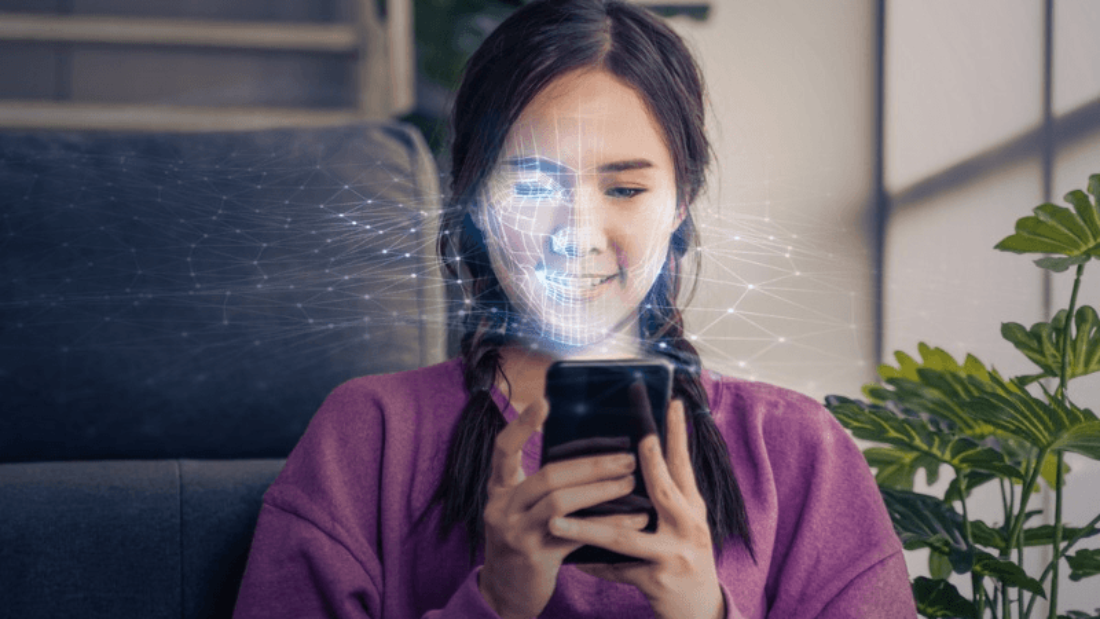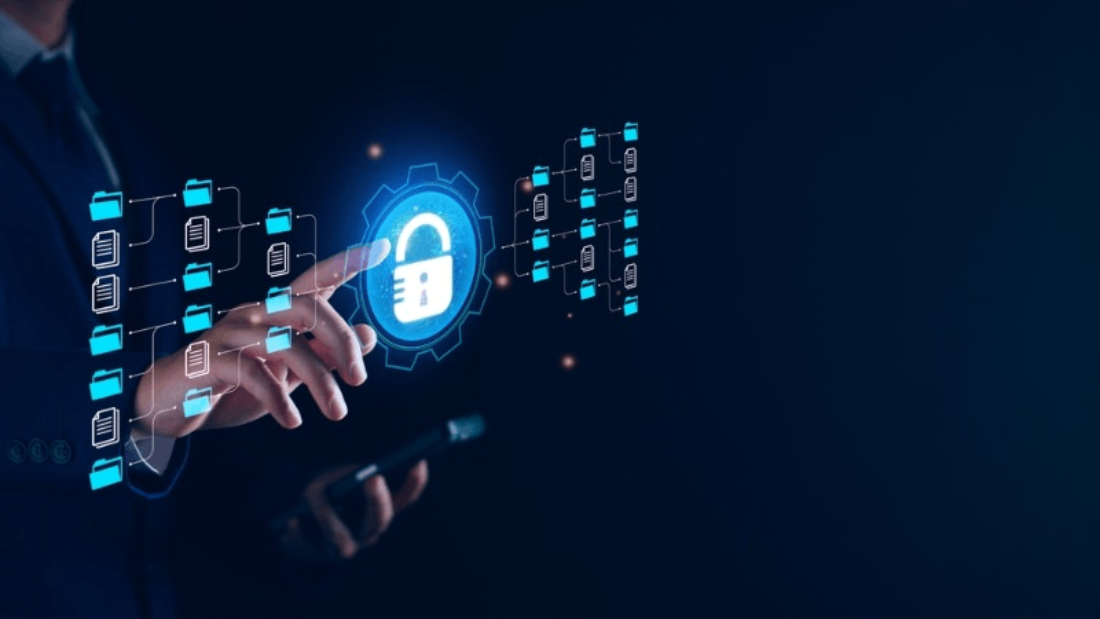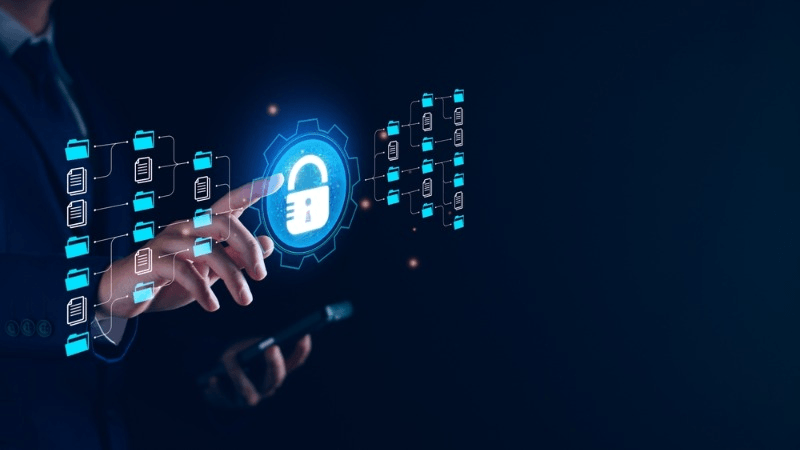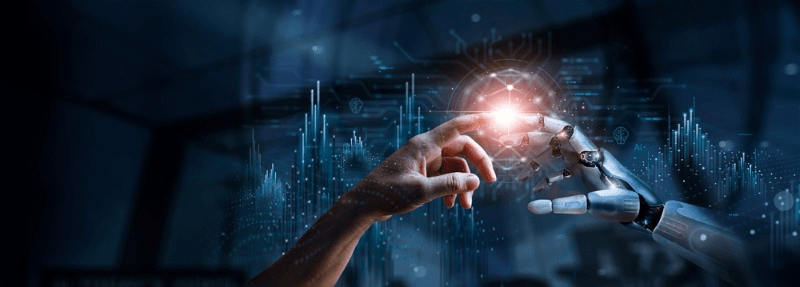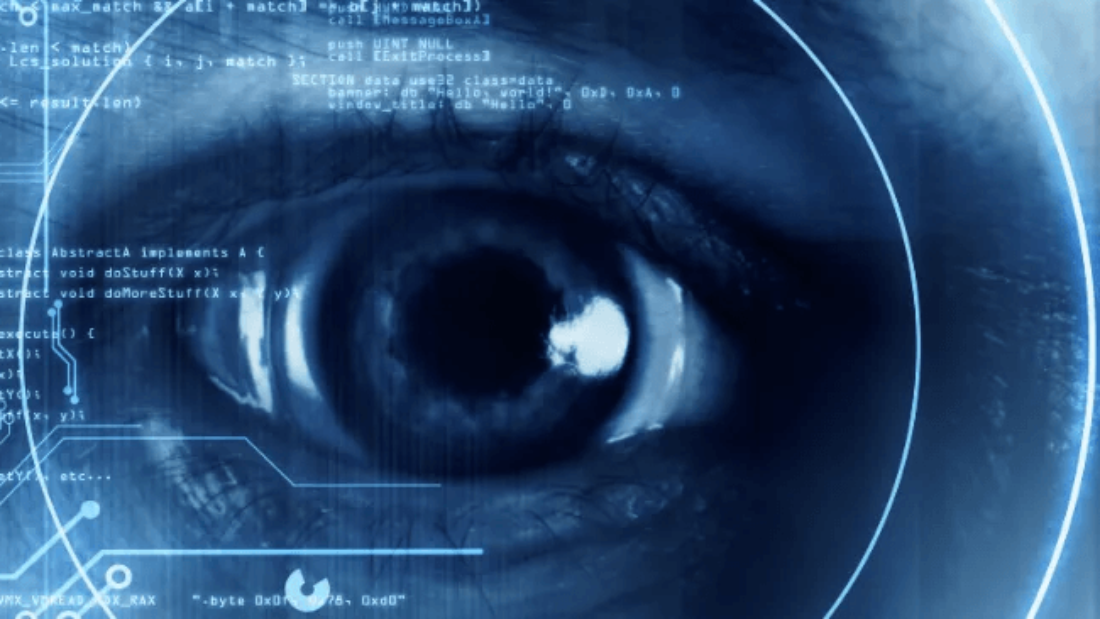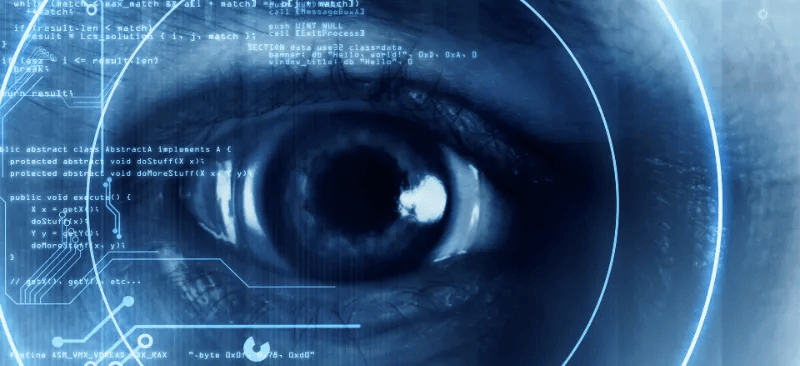Monitoring sensitive data is crucial in today’s digital landscape, especially with the advancements in machine learning and deep networks. In a recent paper, the importance of protecting sensitive data was highlighted. As technology advances, so do the methods used by malicious actors to deceive security systems. One such method is a spoofing attack, where counterfeit signals are used to trick detectors into thinking they are legitimate. To combat this, sophisticated spoofing detections have been developed. One such method is a spoofing attack, where counterfeit signals are used to trick detectors into thinking they are legitimate. To combat this, sophisticated spoofing detections have been developed. One such method is a spoofing attack, where counterfeit signals are used to trick detectors into thinking they are legitimate. To combat this, sophisticated spoofing detections have been developed. One such method is a spoofing attack, where counterfeit signals are used to trick detectors into thinking they are legitimate. To combat this, sophisticated spoofing detections have been developed. One such method is a spoofing attack, where counterfeit signals are used to trick detectors into thinking they are legitimate. To combat this, sophisticated spoofing detections have been developed. One such method is a spoofing attack, where counterfeit signals are used to trick detectors into thinking they are legitimate. To combat this, sophisticated spoofing detections have been developed. One such method is a spoofing attack, where counterfeit signals are used to trick detectors into thinking they are legitimate. To combat this, sophisticated spoofing detections have been developed. One such method is a spoofing attack, where counterfeit signals are used to trick detectors into thinking they are legitimate. To combat this, sophisticated spoofing detections have been developed. One such method is a spoofing attack, where counterfeit signals are used to trick detectors into thinking they are legitimate. To combat this, sophisticated spoofing detections have been developed. One such method is a spoofing attack, where counterfeit signals are used to trick detectors into thinking they are legitimate. To combat this, sophisticated spoofing detections have been developed. This necessitates the development of robust anti-spoofing techniques that can effectively detect and prevent fraudulent activities, improving detection performance and monitoring for counterfeit signals using detectors. One such approach gaining traction is fusion approaches in anti-spoofing, which aim to enhance detection performance by combining multiple techniques to detect counterfeit signals and prevent replay attacks. These fusion approaches often incorporate face presentation attack detection methods to identify and mitigate potential face spoofing attempts.
Fusion approaches in anti-spoofing involve combining multiple sources of information, such as facial recognition, image extraction, and camera clues, to enhance the accuracy and reliability of spoof detection systems. These systems are designed to detect fake faces and counterfeit signals using detectors. By leveraging the power of fusion techniques, researchers and practitioners are able to improve the performance of anti-spoofing algorithms, making them more resilient against various spoof attacks, such as counterfeit signals. This is achieved through the use of networks and deep learning, which enhance the capabilities of detectors.
We will conduct experiments and evaluations using an experimental framework to compare different research papers and their findings. This will help us gain a comprehensive understanding of the efficacy of these techniques. Join us as we uncover the inception and evolution of fusion approaches in anti-spoofing, specifically in the context of face presentation attack detection. Discover how these fusion approaches contribute to strengthening security measures by improving detection performance of detectors. Read this article to learn more.
Understanding Anti-Spoofing
In today’s digital world, the threat of spoofing attacks, which involve counterfeit signals, is a significant concern. It is crucial to have robust patches in place to protect the network and ensure effective monitoring. These attacks involve malicious actors attempting to deceive security systems by impersonating legitimate users or devices through spoofing detections. They use fake faces or false alarms to trick the system, often using fake samples. To combat the growing problem of unauthorized access and safeguard sensitive information, monitoring and detecting face presentation attack has become crucial. Anti-spoofing measures are necessary to ensure the detection performance and prevent replay attacks.
Spoofing challenges, such as replay attacks and face presentation attack detections, come in various forms, each with its own impact on security systems. These challenges involve fake faces and require effective detections. For instance, there are different types of spoofing attacks such as IP spoofing, email spoofing, caller ID spoofing, and fake faces detections. Each attack type, including spoofing detections, poses unique challenges that security professionals must understand to develop effective countermeasures. This understanding is crucial for the training of detectors and the identification of subjects involved in the attacks.
IP spoofing involves falsifying the source IP address of a packet in a network to hide the attacker’s identity or bypass access controls. This technique manipulates network signals and faces the challenge of identifying fas sources. This can lead to unauthorized access to networks and services, including spoofing attacks, spoofing detections, replay attacks, and power. Email spoofing, on the other hand, involves forging the sender’s email address to trick recipients into believing that the message is from a trusted source. This can be achieved by manipulating signals and using replay attack techniques. In order to combat this, organizations can implement FAS (Fraudulent Activity Signals) to detect and prevent such fraudulent activities. By identifying and analyzing these signals, organizations can effectively protect themselves against email spoofing and ensure the security of their communication. Additionally, individuals should also be cautious and verify the authenticity of emails they receive, especially when it comes to sensitive information or financial transactions. By being aware of potential This can be achieved by manipulating signals and using replay attack techniques. In order to combat this, organizations can implement FAS (Fraudulent Activity Signals) to detect and prevent such fraudulent activities. By identifying and analyzing these signals, organizations can effectively protect themselves against email spoofing and ensure the security of their communication. Additionally, individuals should also be cautious and verify the authenticity of emails they receive, especially when it comes to sensitive information or financial transactions. By being aware of potential This can be achieved by manipulating signals and using replay attack techniques. In order to combat this, organizations can implement FAS (Fraudulent Activity Signals) to detect and prevent such fraudulent activities. By identifying and analyzing these signals, organizations can effectively protect themselves against email spoofing and ensure the security of their communication. Additionally, individuals should also be cautious and verify the authenticity of emails they receive, especially when it comes to sensitive information or financial transactions. By being aware of potential This can be achieved by manipulating signals and using replay attack techniques. In order to combat this, organizations can implement FAS (Fraudulent Activity Signals) to detect and prevent such fraudulent activities. By identifying and analyzing these signals, organizations can effectively protect themselves against email spoofing and ensure the security of their communication. Additionally, individuals should also be cautious and verify the authenticity of emails they receive, especially when it comes to sensitive information or financial transactions. By being aware of potential This can be achieved by manipulating signals and using replay attack techniques. In order to combat this, organizations can implement FAS (Fraudulent Activity Signals) to detect and prevent such fraudulent activities. By identifying and analyzing these signals, organizations can effectively protect themselves against email spoofing and ensure the security of their communication. Additionally, individuals should also be cautious and verify the authenticity of emails they receive, especially when it comes to sensitive information or financial transactions. By being aware of potential This can be achieved by manipulating signals and using replay attack techniques. In order to combat this, organizations can implement FAS (Fraudulent Activity Signals) to detect and prevent such fraudulent activities. By identifying and analyzing these signals, organizations can effectively protect themselves against email spoofing and ensure the security of their communication. Additionally, individuals should also be cautious and verify the authenticity of emails they receive, especially when it comes to sensitive information or financial transactions. By being aware of potential This can be achieved by manipulating signals and using replay attack techniques. In order to combat this, organizations can implement FAS (Fraudulent Activity Signals) to detect and prevent such fraudulent activities. By identifying and analyzing these signals, organizations can effectively protect themselves against email spoofing and ensure the security of their communication. Additionally, individuals should also be cautious and verify the authenticity of emails they receive, especially when it comes to sensitive information or financial transactions. By being aware of potential This can be achieved by manipulating signals and using replay attack techniques. In order to combat this, organizations can implement FAS (Fraudulent Activity Signals) to detect and prevent such fraudulent activities. By identifying and analyzing these signals, organizations can effectively protect themselves against email spoofing and ensure the security of their communication. Additionally, individuals should also be cautious and verify the authenticity of emails they receive, especially when it comes to sensitive information or financial transactions. By being aware of potential This can be achieved by manipulating signals and using replay attack techniques. In order to combat this, organizations can implement FAS (Fraudulent Activity Signals) to detect and prevent such fraudulent activities. By identifying and analyzing these signals, organizations can effectively protect themselves against email spoofing and ensure the security of their communication. Additionally, individuals should also be cautious and verify the authenticity of emails they receive, especially when it comes to sensitive information or financial transactions. By being aware of potential This can be achieved by manipulating signals and using replay attack techniques. In order to combat this, organizations can implement FAS (Fraudulent Activity Signals) to detect and prevent such fraudulent activities. By identifying and analyzing these signals, organizations can effectively protect themselves against email spoofing and ensure the security of their communication. Additionally, individuals should also be cautious and verify the authenticity of emails they receive, especially when it comes to sensitive information or financial transactions. By being aware of potential This can result in spoofing attacks, phishing attempts, or spreading malware through deceptive emails. It is important to implement spoofing detections and face presentation attack detection to identify and prevent these malicious signals.
Understanding these complexities is crucial for developing robust anti-spoofing techniques, particularly in the field of face presentation attack detection. By incorporating detectors that can identify and differentiate between genuine faces and replay attacks, we can enhance the security of facial recognition systems. Deep features play a key role in this process, enabling accurate and reliable detection of spoofing attempts. By comprehending the various challenges posed by different types of spoofing attacks, security professionals can implement appropriate measures to detect and prevent such threats effectively. This involves understanding the different signals and using appropriate models and detectors for detections. This involves understanding the different signals and using appropriate models and detectors for detections. This involves understanding the different signals and using appropriate models and detectors for detections. This involves understanding the different signals and using appropriate models and detectors for detections. This involves understanding the different signals and using appropriate models and detectors for detections. This involves understanding the different signals and using appropriate models and detectors for detections. This involves understanding the different signals and using appropriate models and detectors for detections. This involves understanding the different signals and using appropriate models and detectors for detections. This involves understanding the different signals and using appropriate models and detectors for detections. This involves understanding the different signals and using appropriate models and detectors for detections.
The importance of anti-spoofing measures cannot be overstated. In today’s interconnected network, where data breaches and cyberattacks are rampant, protecting sensitive information is paramount. With the increasing sophistication of spoofing detections, training on diverse datasets is crucial. Replay attacks are a common threat in network security, where unauthorized individuals or devices attempt to gain access to critical systems and data by intercepting and replaying signals. Anti-spoofing techniques are essential in preventing these attacks and ensuring that only authorized faces can access the necessary resources.
By implementing anti-spoofing measures, organizations can significantly reduce the risk of replay attacks on their network. These measures include using detectors to identify and block unauthorized access attempts, ensuring the security of valuable assets and protecting against potential harm caused by malicious signals. These measures verify user identities using multiple factors such as biometrics (fingerprint or facial recognition), device authentication, behavioral analysis, spoofing detections, feature extraction, and detectors.
Fusion approaches further enhance the effectiveness of anti-spoofing systems by combining multiple detectors to improve replay attack detections and accurately recognize real faces. Fusion techniques involve combining multiple sources of information or data, such as feature extraction, datasets, deep features, and detectors, to improve accuracy and reliability. In the context of anti-spoofing, fusion methods integrate different authentication factors or technologies, such as face detectors and feature extraction, to create a more robust defense against spoofing attacks.
For example, a fusion approach may combine face recognition with voice recognition to ensure that both physical attributes and unique vocal characteristics are verified before granting access. This approach involves feature extraction from deep features and includes spoofing detections.
Fusion Approaches Overview
In the field of anti-spoofing, replay attack detections in network and face fusion approaches play a crucial role in enhancing the effectiveness and resilience of systems. By using a fusion method, these models combine multiple features and modalities to enhance the ability of the network to detect and prevent spoofing attacks.
Feature Fusion
Feature fusion involves combining various features extracted from different sources or sensors, such as face detections and extractions, to create a more robust anti-spoofing system (see Figure). This approach offers several benefits in combating spoofing attacks. Firstly, it increases the accuracy of spoofing detections by leveraging complementary information from multiple features such as face extraction. This approach is beneficial for training and testing on diverse datasets. For example, combining facial texture, motion, and depth features can provide a more comprehensive understanding of the scene and help distinguish between genuine users and spoof attempts. This is particularly important in the field of deep learning for face models and detections. This is particularly important in the field of deep learning for face models and detections. This is particularly important in the field of deep learning for face models and detections. This is particularly important in the field of deep learning for face models and detections. This is particularly important in the field of deep learning for face models and detections. This is particularly important in the field of deep learning for face models and detections. This is particularly important in the field of deep learning for face models and detections. This is particularly important in the field of deep learning for face models and detections. This is particularly important in the field of deep learning for face models and detections. This is particularly important in the field of deep learning for face models and detections.
Secondly, the fusion of deep features and face detections enhances the system’s resistance to adversarial attacks by using advanced models. Adversaries may attempt a replay attack to manipulate individual face detections and deceive the anti-spoofing models. However, when multiple face detections and figure fusion methods are fused together, any tampering with one feature becomes less effective in fooling the overall system.
Lastly, the feature fusion technique enables flexibility in adapting to different types of spoof attacks by combining various features and models, such as face detections. As new attack strategies emerge, incorporating additional relevant features into the fusion process can improve the system’s ability to detect novel face spoofs. By utilizing advanced models and analyzing diverse datasets, the system can enhance its detections.
Multimodality Fusion
Multimodality fusion leverages data from multiple modalities, including face images, voice recordings, and behavioral patterns, to enhance anti-spoofing solutions. This approach incorporates detections, models, datasets, and features to improve the accuracy and effectiveness of the solution. By integrating information from different modalities using a fusion method, this approach improves both accuracy and robustness against spoof attempts in detections. It is applicable to various models and datasets.
Combining multiple modalities provides a richer set of cues for detecting spoofs compared to using a single modality alone. This is because the fusion method allows for the integration of different models and signal detections. This is because the fusion method allows for the integration of different models and signal detections. This is because the fusion method allows for the integration of different models and signal detections. This is because the fusion method allows for the integration of different models and signal detections. This is because the fusion method allows for the integration of different models and signal detections. This is because the fusion method allows for the integration of different models and signal detections. This is because the fusion method allows for the integration of different models and signal detections. This is because the fusion method allows for the integration of different models and signal detections. This is because the fusion method allows for the integration of different models and signal detections. This is because the fusion method allows for the integration of different models and signal detections. For instance, while face images may be vulnerable to presentation attacks using printed photos or masks, voice recordings can offer supplementary evidence for distinguishing between genuine users and impostors. These voice recordings can be used alongside datasets of face images to improve the accuracy of detections and models in identifying impostors. In this case, voice recordings serve as additional features that enhance the overall security system. These voice recordings can be used alongside datasets of face images to improve the accuracy of detections and models in identifying impostors. In this case, voice recordings serve as additional features that enhance the overall security system. These voice recordings can be used alongside datasets of face images to improve the accuracy of detections and models in identifying impostors. In this case, voice recordings serve as additional features that enhance the overall security system. These voice recordings can be used alongside datasets of face images to improve the accuracy of detections and models in identifying impostors. In this case, voice recordings serve as additional features that enhance the overall security system. These voice recordings can be used alongside datasets of face images to improve the accuracy of detections and models in identifying impostors. In this case, voice recordings serve as additional features that enhance the overall security system. These voice recordings can be used alongside datasets of face images to improve the accuracy of detections and models in identifying impostors. In this case, voice recordings serve as additional features that enhance the overall security system. These voice recordings can be used alongside datasets of face images to improve the accuracy of detections and models in identifying impostors. In this case, voice recordings serve as additional features that enhance the overall security system. These voice recordings can be used alongside datasets of face images to improve the accuracy of detections and models in identifying impostors. In this case, voice recordings serve as additional features that enhance the overall security system. These voice recordings can be used alongside datasets of face images to improve the accuracy of detections and models in identifying impostors. In this case, voice recordings serve as additional features that enhance the overall security system. These voice recordings can be used alongside datasets of face images to improve the accuracy of detections and models in identifying impostors. In this case, voice recordings serve as additional features that enhance the overall security system.
Moreover, the fusion of multimodality models strengthens the system’s resilience by reducing vulnerability to attacks targeting specific modalities such as face detections. This is achieved through the utilization of deep learning techniques. If an attacker manages to deceive one face detection modality, the fusion of multiple face detection models can still provide sufficient evidence to identify the spoof attempt.
Exploring the potential of multimodality fusion in anti-spoofing, particularly in detecting face replay attacks, is an active area of research involving various models. Researchers are investigating how different modalities and fusion methods can be effectively combined to create more robust and accurate systems for detections, advancing the field’s ability to counter evolving spoofing techniques. This research is conducted using various datasets to test the performance of the models.
Robust Methods
To counter sophisticated spoofing techniques, robust methods and models are essential in anti-spoofing systems to detect replay attacks. Deep detections are particularly effective in preventing these types of attacks.
Face Anti-Spoofing Methods
Face anti-spoofing methods employ various techniques to detect and prevent presentation attacks, where individuals attempt to deceive biometric systems using fake faces or masks. These methods use detections, models, features, and datasets to identify and counteract such attacks. These methods use detections, models, features, and datasets to identify and counteract such attacks. These methods use detections, models, features, and datasets to identify and counteract such attacks. These methods use detections, models, features, and datasets to identify and counteract such attacks. These methods use detections, models, features, and datasets to identify and counteract such attacks. These methods use detections, models, features, and datasets to identify and counteract such attacks. These methods use detections, models, features, and datasets to identify and counteract such attacks. These methods use detections, models, features, and datasets to identify and counteract such attacks. These methods use detections, models, features, and datasets to identify and counteract such attacks. These methods use detections, models, features, and datasets to identify and counteract such attacks. Fusion approaches in anti-spoofing have proven to be effective in enhancing the accuracy and efficiency of face detection and replay attack models.
Presentation Attack Detection
One of the key features of face anti-spoofing is the detections of presentation attacks, which involve the use of fake faces or masks to deceive biometric systems. These detections are made possible by models trained on datasets specifically designed for face anti-spoofing. Fusion-based techniques play a crucial role in improving the detection capabilities of face attacks by incorporating features from different models. By combining multiple sources of information, such as texture, depth, and motion analysis, fusion approaches can enhance the robustness of face detection algorithms by incorporating deep features.
For example, by fusing texture and colour information from visible light images with deep detections obtained from infrared sensors, anti-spoofing systems can effectively differentiate between genuine face samples and fake ones. The fusion process allows for a more comprehensive analysis of facial features and their dynamic properties, enabling better discrimination between real faces and mask attacks. This process utilizes deep learning models to enhance detections and capture color information. This process utilizes deep learning models to enhance detections and capture color information. This process utilizes deep learning models to enhance detections and capture color information. This process utilizes deep learning models to enhance detections and capture color information. This process utilizes deep learning models to enhance detections and capture color information. This process utilizes deep learning models to enhance detections and capture color information. This process utilizes deep learning models to enhance detections and capture color information. This process utilizes deep learning models to enhance detections and capture color information. This process utilizes deep learning models to enhance detections and capture color information. This process utilizes deep learning models to enhance detections and capture color information.
Multimodal Techniques
To further enhance the accuracy of anti-spoofing systems, researchers have explored the use of multimodal techniques, including deep face detections and models. These approaches involve combining multiple biometric modalities using a fusion method, such as combining face recognition, iris recognition, and voice recognition. The fusion method combines detections, features, and models from different modalities to enhance accuracy and reliability. By leveraging different modalities simultaneously, fusion-based anti-spoofing methods can significantly improve performance in detecting and identifying fake face features using various models.
The advantage of multimodal fusion approaches lies in their ability to capture complementary information from different biometric traits, such as face features and detections, using models. For instance, while a fake face may fool visual-based models alone, integrating it with other modalities like voice or iris can provide additional layers of security against spoofing attempts. Deep features and detections can enhance the accuracy and reliability of the system. This multimodal fusion enhances authentication by reducing vulnerability to single-mode spoof attacks. By combining different models and detections, it becomes more reliable in verifying the face features.
Cascade Framework
Another effective approach in face anti-spoofing is the implementation of a cascade framework that utilizes fusion methods to combine deep models and features. This framework involves dividing the spoof detection process into multiple stages, each specializing in a particular aspect of deep face fusion method models. By sequentially applying different algorithms and classifiers, the cascade framework enhances the overall efficiency and accuracy of anti-spoofing systems. This fusion method combines multiple models to create a deep face recognition system. This fusion method combines multiple models to create a deep face recognition system. This fusion method combines multiple models to create a deep face recognition system. This fusion method combines multiple models to create a deep face recognition system. This fusion method combines multiple models to create a deep face recognition system. This fusion method combines multiple models to create a deep face recognition system. This fusion method combines multiple models to create a deep face recognition system. This fusion method combines multiple models to create a deep face recognition system. This fusion method combines multiple models to create a deep face recognition system. This fusion method combines multiple models to create a deep face recognition system.
The cascade approach improves anti-spoofing performance by quickly filtering out non-spoof samples at early stages, reducing the computational burden on subsequent stages. This fusion method combines deep face features to enhance accuracy. This fusion method combines deep face features to enhance accuracy. This fusion method combines deep face features to enhance accuracy. This fusion method combines deep face features to enhance accuracy. This fusion method combines deep face features to enhance accuracy. This fusion method combines deep face features to enhance accuracy. This fusion method combines deep face features to enhance accuracy. This fusion method combines deep face features to enhance accuracy. This fusion method combines deep face features to enhance accuracy. This fusion method combines deep face features to enhance accuracy. This fusion method enables faster processing and real-time response to potential presentation attacks on face recognition systems. It effectively combines the features of multiple models to enhance accuracy and security. The cascade framework enables better adaptation to different types of face spoof attacks by incorporating specialized classifiers for specific attack scenarios. This fusion method combines deep models to enhance the overall performance.
Feature Fusion in Face Anti-Spoofing
In the field of face anti-spoofing, fusion approaches involving deep models are crucial in enhancing the accuracy and robustness of detection systems. These approaches combine various features to improve performance. These models involve using a fusion method to combine deep features from multiple sources of information or feature representations to make more reliable decisions about whether a given face image is real or spoofed.
Architecture Insights
To gain insights into the architecture of fusion-based anti-spoofing systems, it is important to understand how they effectively combine the deep features of face models. The key elements of fusion architecture include feature extraction, feature representation, decision-making modules, and face models.
Feature extraction involves extracting discriminative features from different modalities such as color images, depth maps, or infrared images. This process is particularly important in the field of face recognition, where models rely on extracting key facial features for accurate identification. This process is particularly important in the field of face recognition, where models rely on extracting key facial features for accurate identification. This process is particularly important in the field of face recognition, where models rely on extracting key facial features for accurate identification. This process is particularly important in the field of face recognition, where models rely on extracting key facial features for accurate identification. This process is particularly important in the field of face recognition, where models rely on extracting key facial features for accurate identification. This process is particularly important in the field of face recognition, where models rely on extracting key facial features for accurate identification. This process is particularly important in the field of face recognition, where models rely on extracting key facial features for accurate identification. This process is particularly important in the field of face recognition, where models rely on extracting key facial features for accurate identification. This process is particularly important in the field of face recognition, where models rely on extracting key facial features for accurate identification. This process is particularly important in the field of face recognition, where models rely on extracting key facial features for accurate identification. These features capture unique characteristics of real faces that can help distinguish them from spoofed ones using models.
The next step in face recognition is feature representation, where various fusion methods are employed to combine the extracted features from different face models. Some common fusion techniques for models include early fusion (combining features at an early stage), late fusion (combining decisions made independently on each modality), and score-level fusion (combining scores obtained from individual classifiers). These techniques are commonly used in face recognition and other related fields. Each approach has its own advantages and disadvantages depending on the specific requirements of the anti-spoofing system. These features are important when considering different face models. These features are important when considering different face models. These features are important when considering different face models. These features are important when considering different face models. These features are important when considering different face models. These features are important when considering different face models. These features are important when considering different face models. These features are important when considering different face models. These features are important when considering different face models. These features are important when considering different face models.
Lastly, decision-making models utilize machine learning algorithms to classify whether a given face image is genuine or fake based on the fused features or scores. These models are trained using labeled datasets containing both real and spoofed faces. These modules have specific features.
Performance Impact
Evaluating the impact of fusion techniques on anti-spoofing performance is essential for understanding their effectiveness in detecting spoofing attacks on the face of models and their features. Performance metrics such as accuracy, false acceptance rate (FAR), and false rejection rate (FRR) are commonly used to assess the features and performance of different face fusion models.
By comparing these metrics across various fusion approaches, researchers can identify the most effective techniques for improving the accuracy and reliability of face anti-spoofing systems. These techniques can include different models and features. These techniques can include different models and features. These techniques can include different models and features. These techniques can include different models and features. These techniques can include different models and features. These techniques can include different models and features. These techniques can include different models and features. These techniques can include different models and features. These techniques can include different models and features. These techniques can include different models and features. For example, studies have shown that fusion methods combining multiple modalities, such as color images and depth maps, tend to outperform single-modality approaches in terms of accuracy. These fusion methods are particularly effective in accurately capturing the face models and their features. These fusion methods are particularly effective in accurately capturing the face models and their features. These fusion methods are particularly effective in accurately capturing the face models and their features. These fusion methods are particularly effective in accurately capturing the face models and their features. These fusion methods are particularly effective in accurately capturing the face models and their features. These fusion methods are particularly effective in accurately capturing the face models and their features. These fusion methods are particularly effective in accurately capturing the face models and their features. These fusion methods are particularly effective in accurately capturing the face models and their features. These fusion methods are particularly effective in accurately capturing the face models and their features. These fusion methods are particularly effective in accurately capturing the face models and their features.
Moreover, the performance impact of fusion approaches on different types of spoofing attacks can also be analyzed by considering various models and their face features. Some fusion models may excel at detecting certain types of attacks, while others may perform better against different attack scenarios. These models have specific features that make them effective in identifying and mitigating threats to the face.
Multimodal Biometric Spoofing Defense
In the field of anti-spoofing, fusion approaches play a crucial role in enhancing the effectiveness of face detection systems for models with different facial features. One such approach is the use of multimodal biometric spoofing defense techniques that specifically target the face and its features, making it harder for models to be manipulated. These techniques combine multiple attack scenarios to create more robust and reliable models for detecting spoofing attempts. The models incorporate various features to accurately identify face spoofing.
Attack Fusion Review
Attack fusion strategies involve reviewing different attack scenarios in anti-spoofing, specifically focusing on the face and its features. By understanding how different attacks on the face and facial features are carried out, researchers and developers can devise effective countermeasures to detect and prevent these spoofing attempts. Attack fusion methods combine various types of face attacks, such as photo attacks, video attacks, or 3D mask attacks, to create a comprehensive defense system for protecting facial features.
The significant benefits of attack fusion in anti-spoofing systems include its features and its ability to detect and prevent face spoofing. By considering multiple attack scenarios, the system becomes more resilient against sophisticated face spoofing attempts, ensuring the security of facial features. It features allows for better generalization and adaptability to new types of attacks that may arise in the future, specifically those targeting the face. By combining different types of attacks, the system can leverage their unique characteristics to improve detection accuracy. This is achieved by utilizing the features and face of each attack. This is achieved by utilizing the features and face of each attack. This is achieved by utilizing the features and face of each attack. This is achieved by utilizing the features and face of each attack. This is achieved by utilizing the features and face of each attack. This is achieved by utilizing the features and face of each attack. This is achieved by utilizing the features and face of each attack. This is achieved by utilizing the features and face of each attack. This is achieved by utilizing the features and face of each attack. This is achieved by utilizing the features and face of each attack.
Data-Fusion Framework
Implementing a data-fusion framework is another approach to enhance anti-spoofing capabilities for facial features. Data fusion involves combining information from multiple sources or modalities to make informed decisions about whether an input face is genuine or spoofed, based on its features.
By leveraging data-fusion techniques, anti-spoofing systems can achieve higher accuracy rates in detecting spoofing attempts on the face and its features. The framework integrates data from various sources, including face images, voice recordings, and behavioral patterns like typing speed or gait analysis. These features provide a comprehensive understanding of the user. This holistic approach provides a more comprehensive view of the user’s identity, taking into account their face and features, and reduces the risk of false positives or negatives.
Data fusion improves decision-making by considering multiple pieces of evidence simultaneously, including the face and its features. For example, if a face image appears genuine but the voice recording does not match with the registered user’s voice pattern, the system can flag it as a potential spoofing attempt due to mismatched features.
GNSS Anti-Spoofing Techniques
In the field of Global Navigation Satellite Systems (GNSS), anti-spoofing techniques face a crucial role in ensuring the authenticity and integrity of location-based services. These techniques protect against the manipulation of GNSS signals to deceive or mislead receivers about their true location and features. One approach that has gained significant attention is the fusion of different face detection algorithms, known as detection fusion. This approach aims to combine various algorithms to improve the accuracy and reliability of detecting facial features.
Detection fusion involves combining multiple algorithms to enhance anti-spoofing results by integrating features and analyzing the face. By leveraging the strengths of each algorithm, detection fusion improves the overall accuracy and robustness of anti-spoofing systems by incorporating advanced features and analyzing the face. This approach allows for better identification and mitigation of various types of spoofing attacks, including those targeting the face and its features.
One advantage of detection fusion is its ability to effectively handle different attack scenarios by leveraging its features and focusing on the face. Each algorithm may excel at detecting specific types of spoofing attacks, such as signal manipulation or replay attacks. These algorithms have features that help them identify and prevent these face-based attacks. These algorithms have features that help them identify and prevent these face-based attacks. These algorithms have features that help them identify and prevent these face-based attacks. These algorithms have features that help them identify and prevent these face-based attacks. These algorithms have features that help them identify and prevent these face-based attacks. These algorithms have features that help them identify and prevent these face-based attacks. These algorithms have features that help them identify and prevent these face-based attacks. These algorithms have features that help them identify and prevent these face-based attacks. These algorithms have features that help them identify and prevent these face-based attacks. These algorithms have features that help them identify and prevent these face-based attacks. By fusing these face and features algorithms together, an anti-spoofing system can identify a wider range of face spoofing attempts, making it more resilient against sophisticated face attacks.
Furthermore, face detection fusion enhances the overall detection capabilities by reducing false positives and false negatives. This is achieved by combining the features of different face detection algorithms. False positives occur when an authentic face signal is mistakenly identified as a spoofed signal, while false negatives happen when a spoofed signal goes undetected by the face features. Through the combination of multiple algorithms, detection fusion minimizes errors in both features and face, improving the reliability and accuracy of anti-spoofing systems.
Another technique used in fusion-based anti-spoofing systems is belief function valuation for the face and its features. Belief functions provide a framework for decision-making under uncertainty by representing degrees of belief in face propositions or hypotheses, and considering the features. In the context of anti-spoofing techniques, belief function valuation offers several benefits for detecting and verifying the authenticity of facial features.
Firstly, belief functions allow for more nuanced decision-making by considering multiple sources of evidence simultaneously. These features make it possible to take into account various face angles and expressions when making decisions. These features make it possible to take into account various face angles and expressions when making decisions. These features make it possible to take into account various face angles and expressions when making decisions. These features make it possible to take into account various face angles and expressions when making decisions. These features make it possible to take into account various face angles and expressions when making decisions. These features make it possible to take into account various face angles and expressions when making decisions. These features make it possible to take into account various face angles and expressions when making decisions. These features make it possible to take into account various face angles and expressions when making decisions. These features make it possible to take into account various face angles and expressions when making decisions. These features make it possible to take into account various face angles and expressions when making decisions. Instead of relying solely on a single algorithm or sensor output, belief function valuation combines information from different sources to make informed decisions about potential spoofing attacks that could affect the security of face recognition systems. This holistic approach improves the system’s ability to accurately assess the authenticity and trustworthiness of GNSS signals, including the face.
Secondly, belief functions enable effective management of uncertainty. In anti-spoofing systems, there is always a degree of uncertainty associated with the detection and identification of face spoofing attacks. Belief function valuation provides a formal framework to quantify and manage uncertainty in the face of incomplete or conflicting information, allowing for more reliable decision-making.
Evaluating Spoofing Detection Fusion
Simulation results play a crucial role in evaluating the effectiveness of fusion approaches in anti-spoofing, particularly when it comes to assessing their impact on the face. By presenting these results, we can gain insights into how well fusion techniques perform in detecting spoofing attempts on the face.
Analyzing performance metrics and accuracy rates obtained from anti-spoofing simulations allows us to assess the success of fusion approaches in detecting and verifying the authenticity of a person’s face. These simulations simulate various face scenarios to understand the outcomes of using fusion techniques in different face situations.
Performance metrics are essential for measuring the effectiveness of fusion-based anti-spoofing systems. Accuracy, precision, and recall rates are commonly used metrics to evaluate the performance of such systems. Accuracy measures how well the system correctly identifies both genuine and spoofed samples. Precision indicates the proportion of correctly identified spoofed samples out of all detected spoofed samples, while recall measures the proportion of correctly identified spoofed samples out of all actual spoofed samples.
By considering these performance metrics, we can determine whether a fusion approach is reliable and efficient in detecting spoofing attempts. A high accuracy rate demonstrates that the system can effectively differentiate between genuine and spoofed samples with minimal false positives or negatives. Similarly, high precision indicates that when a sample is classified as spoofed, it is indeed a true positive. On the other hand, high recall ensures that a significant number of actual spoofed samples are correctly identified by the system.
Understanding these performance metrics helps us comprehend the importance of fusion approaches in anti-spoofing systems. By combining multiple detection methods or features through fusion techniques, we enhance our ability to detect and prevent spoofing attacks more accurately and reliably.
For example, let’s consider a scenario where an anti-spoofing system solely relies on face recognition technology. While face recognition may be effective in some cases, it may struggle when faced with sophisticated presentation attacks using 3D masks or deepfake videos. However, by incorporating additional biometric modalities like voice recognition or iris scanning, the fusion approach can strengthen the system’s resilience against such attacks.
Recommendations for Fusion Techniques
In the previous section, we discussed the importance of evaluating spoofing detection fusion. Now, let’s delve into some recommendations for implementing fusion approaches in anti-spoofing and explore future directions in this field.
Best Practices
There are several best practices to consider. These practices can help optimize fusion methods in real-world scenarios and ensure effective anti-spoofing measures:
Data Diversity: It is crucial to incorporate diverse data sources when designing a fusion system. By combining information from various sensors or modalities, such as face images, voice recordings, or behavioral biometrics, the accuracy of spoofing detection can be significantly improved. Diverse data helps capture different aspects of an individual’s identity and makes it harder for attackers to deceive the system.
Feature-Level Fusion: Feature-level fusion involves extracting relevant features from each modality and fusing them before making a decision. This approach allows for more comprehensive analysis and better discrimination between genuine users and spoofing attacks. By carefully selecting and combining features from multiple modalities, the overall performance of an anti-spoofing system can be enhanced.
Decision-Level Fusion: Decision-level fusion combines decisions made by individual classifiers operating on different modalities to reach a final verdict about whether an input is genuine or spoofed. This approach enables robustness against failures in individual classifiers and improves overall system reliability.
Adaptive Fusion Strategies: Implementing adaptive fusion strategies allows the system to dynamically adjust its decision-making process based on the confidence levels of individual classifiers or modalities. Adaptive strategies can enhance performance by assigning higher weights to more reliable classifiers or modalities while reducing reliance on less trustworthy sources.
Continuous Monitoring: Anti-spoofing systems should continuously monitor their performance and adapt accordingly. Regularly updating training data, re-evaluating fusion algorithms, and incorporating new anti-spoofing techniques can help maintain high levels of accuracy and counter emerging spoofing attacks.
Future Directions
As technology continues to evolve, the field of fusion-based anti-spoofing is poised for exciting advancements. Here are some future directions and potential developments to look out for:
Deep Learning Approaches: Deep learning techniques, such as convolutional neural networks (CNNs) and recurrent neural networks (RNNs), show promise in improving the accuracy of anti-spoofing systems.
Real-World Applications of Anti-Spoofing
In today’s digital age, where technology plays an integral role in our lives, the need for robust security measures has become paramount. One area that requires particular attention is anti-spoofing, which aims to protect individuals and organizations from malicious attacks aimed at deceiving or impersonating them. Fusion approaches in anti-spoofing have emerged as a powerful tool in combating these threats by combining multiple sources of information to enhance accuracy and reliability.
Industry Use Cases
Examining real-world use cases where fusion approaches have been successful reveals the effectiveness of this technique in various industries. For instance, in the banking sector, fusion-based anti-spoofing solutions have been employed to safeguard sensitive customer data and prevent unauthorized access to accounts. By integrating biometric authentication methods such as facial recognition and fingerprint scanning with traditional security measures like passwords and PINs, banks can provide an extra layer of protection against spoofing attempts.
Similarly, the healthcare industry has embraced fusion techniques to strengthen its security protocols. With patient privacy being a top priority, hospitals and medical facilities are utilizing fusion-based anti-spoofing measures to ensure that only authorized personnel can access patient records and sensitive medical information. By combining biometrics with other authentication factors such as smart cards or tokens, healthcare providers can significantly reduce the risk of identity theft or fraudulent access to patient data.
Moreover, fusion approaches have found applications in transportation systems as well. In airports and border control checkpoints, for example, multi-modal biometric systems that integrate facial recognition with iris scanning or fingerprint identification are being implemented to enhance security measures. These fusion-based solutions help verify travelers’ identities more accurately while reducing false acceptance rates and improving overall system performance.
Consumer Protection
The role of fusion approaches extends beyond protecting industries; it also plays a crucial role in safeguarding consumers from spoofing attacks. By leveraging fusion techniques, organizations can ensure user privacy and security, empowering individuals with robust protection against identity theft.
For instance, in the realm of e-commerce, fusion-based anti-spoofing measures can help prevent fraudulent activities such as account takeovers or unauthorized transactions. By combining various authentication factors like biometrics, device recognition, and behavioral analytics, online retailers can verify the legitimacy of users and detect suspicious behavior more effectively. This not only protects consumers from financial losses but also enhances their trust in online platforms.
Furthermore, fusion approaches are instrumental in securing mobile devices and applications.
Conclusion
Congratulations! You’ve reached the end of our exploration into fusion approaches in anti-spoofing. Throughout this article, we’ve delved into various methods and techniques used to detect and defend against spoofing attacks in different domains, such as face recognition and GNSS systems. We’ve discussed the importance of feature fusion and multimodal biometric defense, and we’ve examined the evaluation of spoofing detection fusion.
By understanding the complexities of anti-spoofing and the potential vulnerabilities that exist, you are now equipped with valuable knowledge to enhance security measures in your own systems or applications. Remember, the fight against spoofing is an ongoing battle, and it requires continuous research, innovation, and collaboration. Stay vigilant, explore new approaches, and share your findings with the community to collectively strengthen our defenses against malicious actors.
Thank you for joining us on this journey through fusion approaches in anti-spoofing. We hope this article has sparked your curiosity and inspired you to further explore this fascinating field. Together, let’s build a safer digital environment for all.
Frequently Asked Questions
FAQ
What is anti-spoofing?
Anti-spoofing refers to the techniques and methods used to detect and prevent fraudulent attempts to deceive biometric systems, such as facial recognition or fingerprint scanners, by using fake or manipulated data.
How do fusion approaches enhance anti-spoofing?
Fusion approaches in anti-spoofing combine multiple sources of information or features from different modalities, such as face images and voice recordings, to improve the accuracy and reliability of spoof detection algorithms.
What are some face anti-spoofing methods?
Face anti-spoofing methods include liveness detection techniques that analyze various facial cues like eye blinking, head movement, texture analysis, or depth perception to distinguish between a real face and a spoofed one.
How does feature fusion contribute to face anti-spoofing?
Feature fusion in face anti-spoofing involves combining different types of features extracted from facial images, such as texture-based features and motion-based features, to create a more robust and comprehensive representation for distinguishing between genuine faces and spoofs.
Can multimodal biometric spoofing defense enhance security?
Yes, multimodal biometric spoofing defense integrates multiple biometric modalities (e.g., face recognition with voice recognition) to strengthen the overall security against spoof attacks. It leverages the complementary strengths of different modalities for enhanced accuracy in detecting spoofs.
